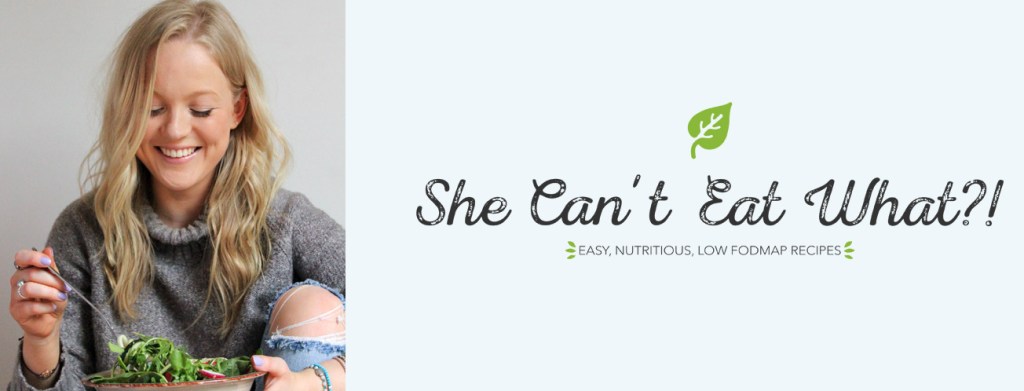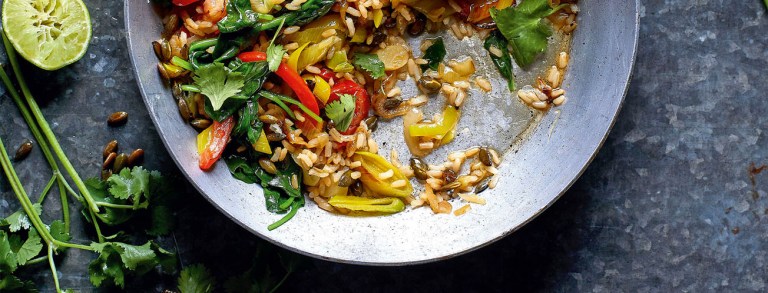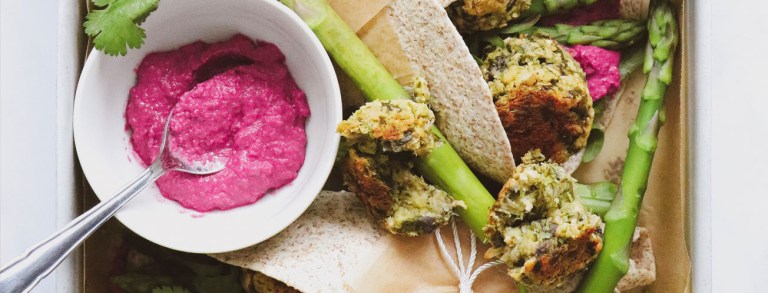10 Questions About The FODMAP Diet Answered By An Expert…

We asked author and FODMAP diet-er Emma Hatcher 10 common questions about the FODMAP diet, to find out what it is, who could use it and why.
1. What does FODMAP mean and what does the FODMAP diet do?
FODMAP is an acronym that stands for:
- Fermentable
- Oligosaccharides
- Disaccharides
- Monosaccharides
And
- Polyols
I know – it’s a lot to take in. But really the above words are just complex names for a collection of molecules (more specifically short chain carbohydrates/sugars and sugar alcohols), found in foods naturally or as food additives.
When you consume FODMAPs through food or drink, they can be poorly absorbed in the small intestine. They then pass through to the large intestine, which is where things can get nasty:
- The FODMAPs are readily fermented by bacteria in the large bowel, contributing to the production of gas.
- The FODMAPs are also highly osmotic, meaning that they attract water into the large bowel, which can alter how quickly the bowels move.
These two processes can then trigger horrible IBS type symptoms including excess wind, abdominal bloating and distension, abdominal pain, constipation or diarrhoea, or a combination of both. The low FODMAP diet works by decreasing the total amount of FODMAPs in the diet, before working out individual’s own personal tolerance thresholds. This means it can be tailored to YOU and as a result, improve the gut symptoms associated with IBS.
2. Are there specific tests or guidelines regarding who should or shouldn’t follow this diet?
It is recommended that you consult a healthcare professional, to make sure you have ruled out associated digestive conditions such as Coeliac and Inflamatory Bowel Disease (IBD) etc, and have undertaken all relevant tests.
A hydrogen methane breath test is also advised as one of the primary diagnostic tools for food intolerances. This allows you to see which sugars are being poorly digested, and also provides further information about conditions which may present similar symptoms to IBS, such as Small Intestinal Bacteria Overgrowth (SIBO).
3. What are the symptoms of FODMAP intolerance?
As I mentioned, the symptoms of FODMAP intolerance are that of IBS type symptoms, including excess wind, abdominal bloating and distension, abdominal pain, constipation or diarrhoea, or a combination of both (charming, right?).
4. How successful is the low FODMAP diet?
Research has shown that the low FODMAP diet is effective for around 70% of people with IBS who try it – which is amazing. It can be a little tricky and restrictive at first, but once you get the hang of it you shouldn’t have any problems. Food is still delicious and nutritious, simple and fun! And I fully believe the learning-curve is a small price to pay for something that could chance your life – as it did mine.
The current medical recommendation for the management of IBS type symptoms is a diet low in FODMAPs. This has now been written into the updated UK NICE guidelines, which specifically prescribe this to be the best management tool for IBS type symptoms.
5. I want to try the low FODMAP diet. What should I do?
The diet itself is quite a complex approach and so it is important that you receive good quality advice about how to follow it.
After ruling out other health conditions, it’s recommended completing a breath test, to identify and pinpoint the offending sugars in your diet. From here, you will have a base as to which sugars are the most malabsorbed, and can begin your low FODMAP journey, to improve your symptoms!
6. Why do food lists sometimes offer differing and conflicting information?
There are some discrepancies between FODMAP data that exist in the literature. This is largely due to seasonal variances in food quality. For example, a tomato grown in a warmer climate may have slightly different fructose levels to one sourced elsewhere.
7. Are there any recipes available that are low in FODMAPs?
Yes! Alongside all of this fantastic research, I noticed a lack of easy, healthy, FODMAP friendly recipes available and set up my blog a couple of years ago, to share recipes and my personal story following the diet. I’m also now so excited to have the opportunity to partner with Australian experts FODMAP Friendly, who are now working internationally to help FODMAP followers around the world, and share with you my new low FODMAP cookbook, The FODMAP Friendly Kitchen, with over 100 easy and tasty recipes, an introduction to the low FODMAP diet, helpful meal plans as well as tips and stories from my own experience with food intolerances.
8. Does organic matter to FODMAP?
No, the FODMAP levels of the food are not affected by the origin of the food (ie organic or non organic). The FODMAP sugars are contained in and around the food in question, but are not impacted by the sourcing/method of food harvesting overall. As mentioned above, there may be some differences between foods of the same nature due to seasonal changes.
9. How can the low-FODMAP diet be followed when eating out?
It’s the worst feeling when you’re out having dinner with friends and you look down at the menu only to think ‘…I can’t eat one item on here’. But generally try to avoid the more extravagant and ingredient packed dishes and instead opt for those more simple. This may minimise the risk of the overall dish containing too many FODMAP rich foods for your digestive tract in one sitting.
I’ll often ask for plain fish, vegetables and potatoes and make it clear to any chef before I eat at a restaurant about my intolerances. It’s not always easy and patience and compromise is required – but you deserve a delicious, nutritious meal the same as everybody else so don’t feel bad about asking questions and explaining your situation!
Also try to avoid cuisines that have a lot of rich sauces and bold flavours such as Chinese and Indian, and instead go for something like Italian which is often a great option as many restaurants now serve gluten free pizza bases (just make sure you ask for low FODMAP toppings!). Japanese food is delicious and healthy too – just ask for Tamari instead of soy sauce and stick with simple sushi such as cucumber or salmon rolls.
10. What are common sources of hidden FODMAPs?
FODMAPs are sneaky things and can be found hiding in lots of foods, from stocks to muesli bars and spice mixes such as chilli powder. Hopefully resources such as my new book, The FODMAP Friendly Kitchen and handy apps such as FODMAP Friendly’s, will help you understand exactly what FODMAP’s are and just how to look out for them!










